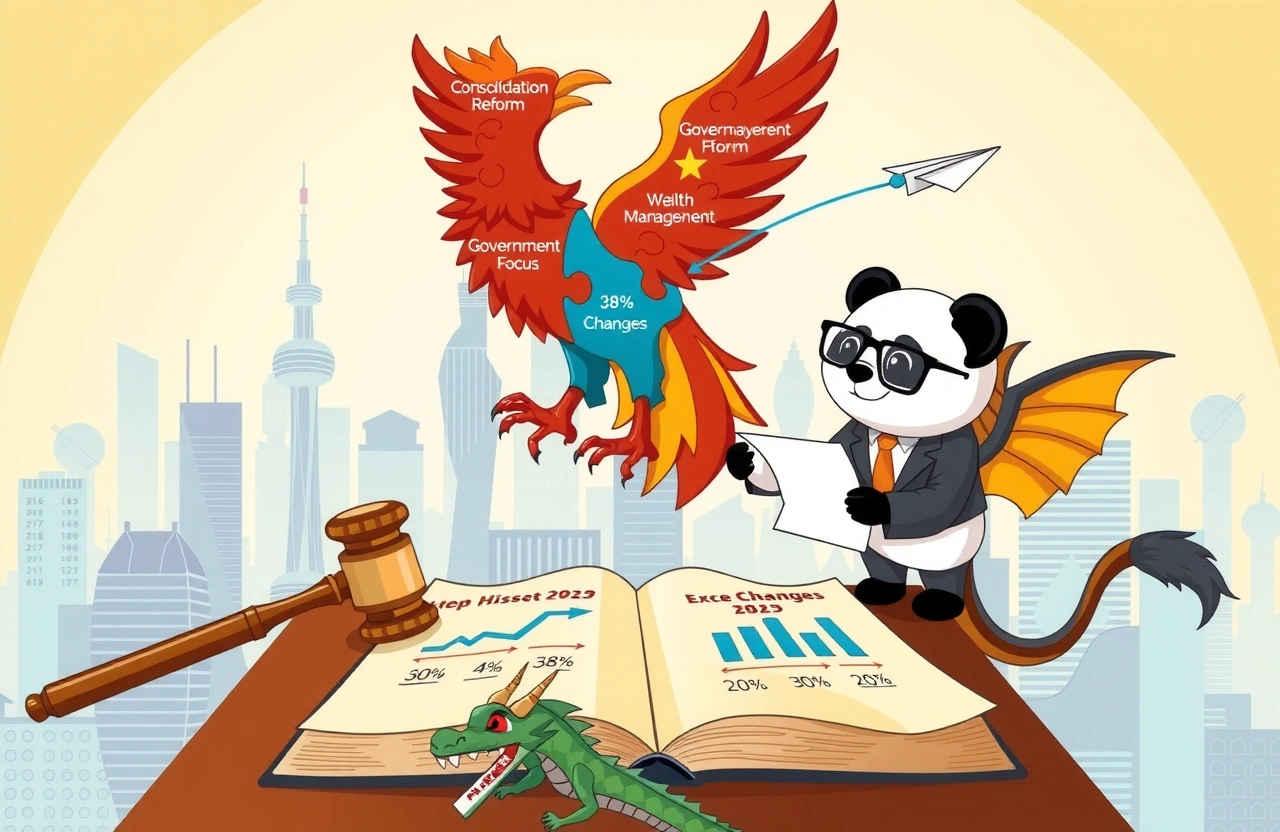• Huang Deliang (黄德良) appointed Chairman of Huafu Securities after 11 years as president, part of industry-wide reshuffle
• At least 8 major Chinese securities firms changed leaders in 2025, including CITIC Securities and Guotou Securities
• Management shifts driven by retirements, ownership restructuring, and regulatory evolution
• Strategic implications for market consolidation and corporate governance reform
Restructuring at China’s financial institutions reached a pivotal moment on July 3, 2025, when Huafu Securities announced Huang Deliang (黄德良) as its new Chairman during coordinated leadership transitions across the brokerage sector. This high-level rotation at Huafu coincides with Guotou Securities appointing Wang Suwang (王苏望) as Chairman on the same day. These executive moves highlight accelerating leadership transitions across China’s securities industry, with at least eight major brokerages announcing chairman changes in 2025. The revolving door phenomenon at firms including CITIC Securities, Yuekai Securities, and Zhongtou Securities represents fundamental industry realignment through executive repositioning.
Huafu Securities: Leadership Transition Strategy
Huafu Securities completed its planned succession on July 3 following former chairman Su Junliang’s (苏军良) departure to Xingye Securities last month. Huang Deliang now assumes comprehensive leadership overseeing $90 billion in assets.
Profile: Huang Deliang’s Professional Journey
Born in 1973, Huang Deliang brings distinctive cross-sector expertise:
– Banking foundation: Began career at Industrial Bank in 1996
– Diversified financial exposure: Transitioned to trust management at Industrial International Trust
– Securities specialization: Led Huafu Securities as President since 2014
His promotion concludes an intensive seven-month recruitment process amid industry-wide leadership transitions.
Operational Milestones Under Huang’s Presidency
Financial indicators under Huang’s tenure demonstrate transformative growth:
– Client assets grew 38% year-over-year to ¥800 billion
– Net assets increased 41% to ¥19 billion
– Established 23 new specialized wealth management divisions
These leadership transitions directly correspond with enhanced capitalization and competitive positioning.
Simultaneous Management Shifts Across Brokerages
The July 3 brokerage leadership transitions extended beyond Huafu Securities, signaling synchronized industry reorganization.
Guotou Securities’ Command Restructuring
Wang Suwang (王苏望) transitioned from General Manager to Chairman at Guotou Securities, completing the brokerage’s leadership transitions framework implementation.
Daiwa Securities China’s Unexpected Opening
Simultaneous leadership gap emerged when General Manager Geng Xin (耿欣) departed unexpectedly:
– Chairman Mototsugu Noriyose assumed interim management
– Joint venture ownership includes Beijing State-owned Capital Operation
This unscheduled transition adds unpredictability to market dynamics.
2025 Brokerage Leadership Transition Timeline
Strategic leadership transitions across securities firms mark 2025 as a historic restructuring year. This systematic position rotation demonstrates governance modernization.
First Quarter Changes
January-February included notable transitions:
– Jan 17: Yuekai Securities’ Yan Yibin resigned
– Feb 27: Huaxing Securities appointed Wang Lixing
Structural leadership transitions addressed generational renewal.
Second Quarter Restructuring
The leadership transitions wave intensified through Q2:
– June 23: Xingye Securities’ Yang Huahui retired (Su Junliang replacement)
– June 23: BOC Securities’ Ning Min resigned (Zhou Quan nominated)
– June 27: China Post Securities’ Guo Chenglin promoted provincial role
High-profile exits accelerated mid-year repositioning.
Core Drivers Behind Leadership Transitions
From regulatory pressures to ownership structures, multiple forces converged to generate unprecedented leadership transitions.
Demographic and Tenure Factors
The current leadership transitions prominently involve overhauling executives approaching retirement thresholds:
– Industry-wide demographic replacement cycle
– Position-specific service term constraints
– Succession planning protocol activation at mid-sized brokerages
Shareholder-Driven Reorganizations
Equity adjustments necessitated comprehensive leadership transitions at institutions like:
– Guodu Securities (Zheshang Securities assumed control)
– Debang Securities (Shandong Financial Group acquired stake)
Ownership consolidation updated corporate commands.
Strategic Implications for Securities Sector
The widespread leadership transitions fundamentally alter competitive landscapes through tangible operational shifts.
Business Philosophy Evolution
New executives bring distinctive operational priorities:
– Technology integration mandates
– Wealth management expansion emphasis
– Provincial market specialization strategies
These leadership transitions introduce differentiated competitive approaches.
Regulatory Alignment Patterns
Observers note fresh executives demonstrate:
– Stronger compliance programs
– Enhanced disclosure practices
– Proactive stakeholder communication
Such governance improvements strengthen market confidence.
Consolidation Signal Interpretation
The coordinated leadership transitions foreshadow potential industry-wide consolidation:
– Provincial brokerages aligning with national institutions
– Private institutions restructuring under state capital
– Foreign joint ventures optimizing localization leadership
Investment analysts monitor succession developments for merger precursors.
Navigating Future Industry Evolution
The transformative leadership transitions across China’s brokerage sector signal institutional adaptability replacing legacy frameworks. Market participants should track strategic appointments at provincial brokerage networks where regulatory integration converges with local economic priorities. Institutional investors require diligent monitoring of transitional periods following these appointments – newly appointed executives typically unveil revised business plans within weeks. Competitive analysis must account for radical philosophical shifts that accompany leadership transitions. Ultimately, investors monitoring these systematic changes gain critical insight into China’s financial infrastructure modernization pathway.
Financial institutions undergoing governance transitions present distinctive investment considerations:
– Evaluate succession planning stability
– Identify operational capability gaps
– Analyze proprietary technology commitments
Such assessment frameworks position stakeholders to capitalize on reorganization opportunities.



